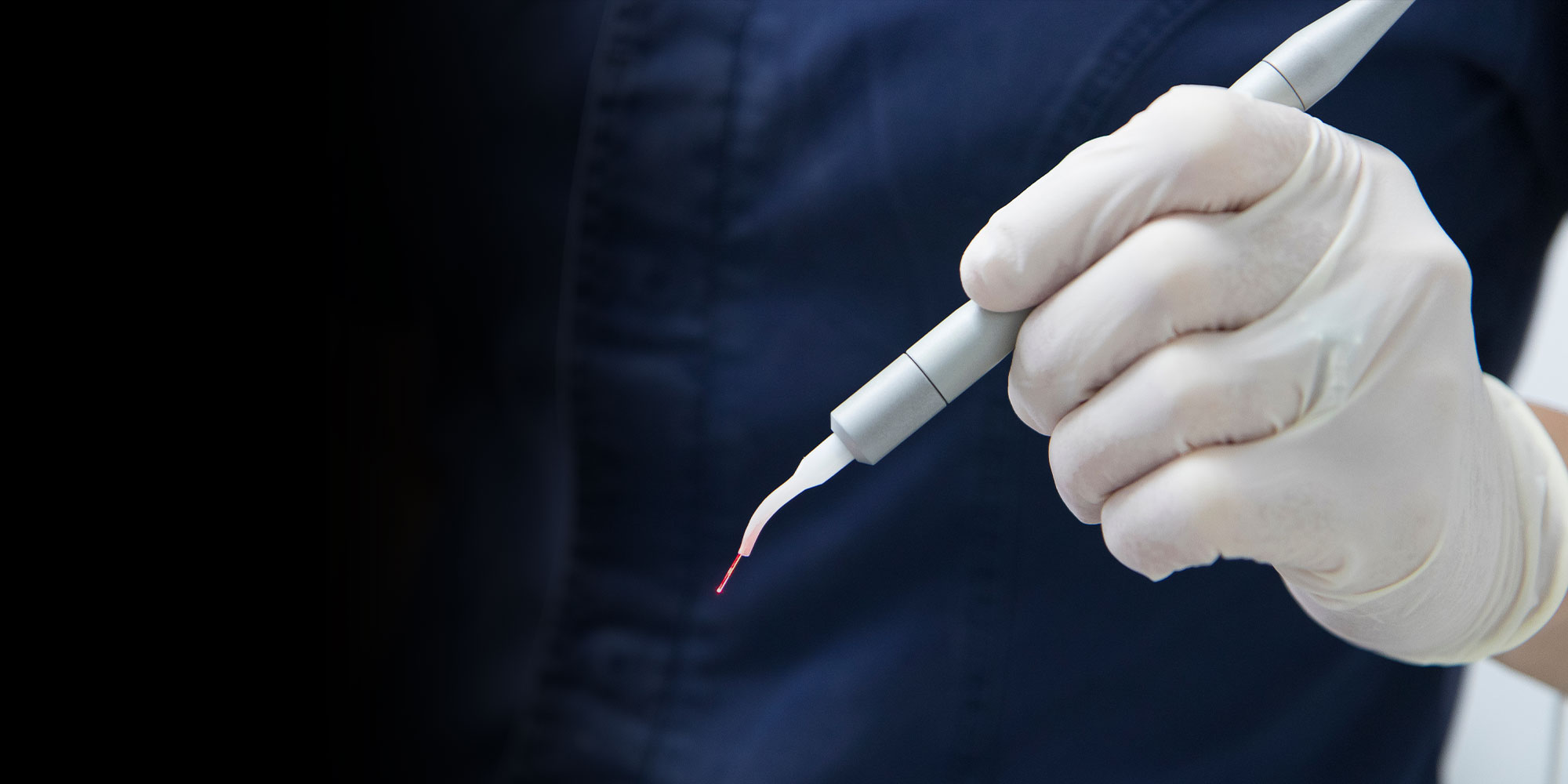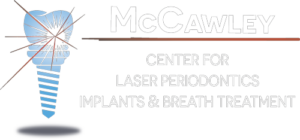
Favorable clinical and regenerative histological changes in human periodontitis lesions have been noted following use of the laser-assisted new attachment procedure (LANAP) surgical treatment protocol (Figure) (Yukna et al. 2007, Nevins et al. 2012). The anti-bacterial effects of LANAP therapy on subgingival microbial populations, which may contribute to favorable treatment outcomes, have not been studied to date. This study assessed the immediate post-treatment effects of LANAP therapy, as compared to ultrasonic root debridement alone, on putative bacterial pathogens in deep periodontal pockets.
20 adults with untreated severe chronic periodontitis were subjected to the LANAP treatment protocol (Gregg & McCarthy 2001). Using a free-running, pulsed Nd:YAG laser (Periolase MVP-7, Millennium Dental Technologies, Inc., Cerritos, CA), and a 360-µm diameter optical fiber in a handpiece, laser energy was first directed parallel to the root surface in a coronal-apical pass for sulcular tissue ablation (3.8-4.0 W, 150-µs pulse duration, 20-Hz), and then, after ultrasonic root debridement, in an apical-coronal pass for hemostasis (3.8-4.0 W, 650-µs pulse duration, 20-Hz). 6 other adults with untreated severe chronic periodontitis received ultrasonic root debridement alone. Two paper point subgingival microbial specimens were collected immediately before and after completion of LANAP®, and ultrasonic root debridement only, treatment from one tooth per patient with at least two inflamed ≥ 6 mm (mean ± SD = 7.4 ± 1.1 mm) probing depths, transported in VMGA III, and selected putative bacterial pathogens identified using established anaerobic culturing.
LANAP-treated patients exhibited an immediate decreased occurrence in subgingival Porphyromonas gingivalis (90% of species-positive patients becoming culture-negative immediately post-LANAP therapy), Tannerella forsythia (82.4%), Prevotella intermedia/nigrescens (87.5%), Parvimonas micra (90%), Fusobacterium species (83.3%), Campylobacter species (88.9%), Eubacterium species (100%), Dialister pneumosintes (66.7%), Eikenella corrodens (100%), and gram-negative enteric rods/ pseudomonads (100%) (Table). 85% of LANAP-treated patients were culture-negative for all evaluated periodontal bacterial pathogens in immediate post-treatment subgingival samples. 100% of patients treated with ultrasonic root debridement alone remained culture-positive for most subgingival bacterial pathogens detected at baseline (Table).
The LANAP treatment protocol, but not conventional ultrasonic root debridement, immediately suppressed putative bacterial pathogens below culture detection limits in 17 out of 20 teeth (34 out of 40 sites) with deep periodontal pockets while ultrasonic debridement failed to eliminate the pathogens in any of the 6 teeth (0 out of 12 sites) sampled.
The pronounced immediate anti-bacterial impact of the LANAP treatment protocol on subgingival putative periodontal pathogens may be an important factor contributing to the favorable clinical and regenerative histological changes observed following LANAP therapy on human periodontitis lesions.
